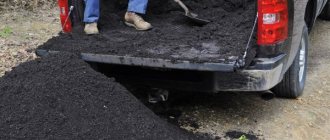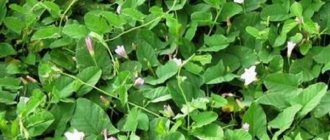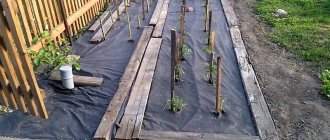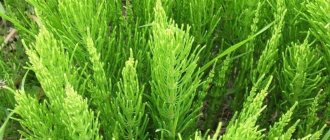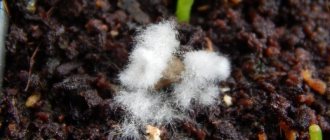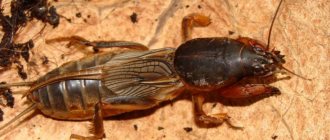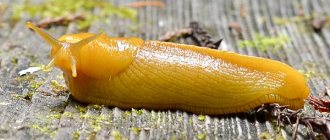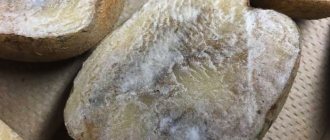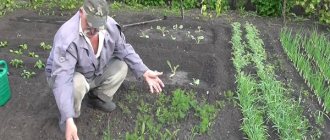Weed - woodlice grass, biting midge, biting midge: what is it, what does it look like?
Woodlice is a herb that every gardener knows by sight. Very often it becomes the reason for frequent weeding and treatment of the land with chemicals, because so many people try to get rid of the annoying “moth”.
Woodlice is a grass with small oblong leaves pointed in the middle. At the same time, woodlice can have a long stem, which allows it to spread along the ground and drown out useful crops. Woodlice blooms with small white flowers, reminiscent of chamomile flowers, only with a light green core.
This is how woodlice blooms
Woodlouse is called the following names depending on the region: woodlouse, midge, hernia grass, canary grass. The official name found in herb guides is chickweed.
This is interesting! Woodlice belongs to the genus of annual plants, which, however, does not prevent it from refilling the gardens every year.
Description of woodlice
There are several species of this plant, most of which are perennials. These include:
- Lanceolate woodlice - has a stem length of about 30 cm. This erect, branched plant blooms from April to May.
- Bunge - the height of the grass is about 50 m, it blooms throughout the summer.
- Woodlice is a plant with an erect, long stem and a thin, deep rhizome.
- Marsh - has creeping stems 5-40 cm high. Grows near swamps and ponds.
- Cereal - a grass with creeping branched stems, spreading inflorescences and small white flowers.
The listed species have medicinal properties. They grow in the wild and are almost never found on cultivated lands. In Russia, the most common species is forest chickweed, which can be annual or biennial. Its stems are highly branched and fragile. The surface of the branches is covered with tiny fibers.
Forest chickweed reproduces in two ways:
- Seminal.
- Vegetative.
The seed ripening period is 4 weeks. Due to the lack of a dormant period, they germinate immediately when placed in moist soil. The seeds are distinguished by their high survival rate: they are not afraid of either heat or frost, and can lie in the soil for up to 25 years. The green, above-ground part of the weed has moisture-accumulating properties, so it does not die during prolonged droughts.
Seeds are able to germinate at a temperature of +4 degrees, and in warm weather there is rapid proliferation of weeds that suppress the activity of cultivated plants. The most favorable conditions that can help woodlice become more active are:
- High soil moisture.
- Fertile soils.
- Increased soil acidity.
- Areas shaded from direct sunlight.
If there are a lot of woodlice in the garden, then what kind of soil is it, what kind of soil does woodlice weed like?
Woodlice is not picky about soil; however, it does not grow well on sandy soil. It loves dark places and can even grow under boards and bricks. The main condition for active growth of woodlice is moisture. The stem of this herb is very thin and delicate, covered with fine hairs, thanks to which the plant accumulates and retains moisture.
Excellent places for woodlice to grow are under low bushes, in potato fields, in cucumber beds and greenhouses with tomatoes and peppers.
Woodlice likes to grow with other weeds
The acidity of the soil is not so important for this moisture-loving plant; the main conditions are the presence of useful minerals, warmth and moisture.
Does woodlice interfere with potato growth?
Contrary to the popular belief that any weeds must be destroyed, it should be said that moderation is needed in everything. Only excessive weed growth is harmful to cultivated plants. While a small amount of the same woodlice on potato beds will be an indicator of good soil. Since woodlice is reborn two to four times during the season, the soil on which this grass grew will be constantly replenished with nutrients. Potato tops suppress weed growth when they reach their peak growth.
Advice! But during the formation of the tuber and the first shoots, the number of weeds must be controlled so that they do not choke the potatoes.
The potato harvest largely depends on neighboring plants
Why does woodlice grow in the garden?
In its natural environment, woodlice does not compete very successfully with other perennial weeds, which is why its weak shoots spread at the very bottom under the canopy of other grasses. But on fertile soils with sparse vegetation, chickweed feels excellent, so it eagerly conquers more and more new territories.
Under conditions of regular weeding and loosening of the soil, woodlice simply grows uncontrollably, having all the necessary properties for this. With a rather short life cycle, woodlice manages to produce 3-4 generations per season.
One plant has an average seed productivity of 2.5 thousand seeds, which overwinter well and sprout at low positive temperatures. Woodlice is frost-resistant and sometimes grows and blooms under the cover of snow, and thanks to its ability to self-pollinate, it can produce new seeds even in winter.
In addition, the stems that creep along the ground take root well. And even a severed stem can remain viable for a long time. In a word, the plant seems indestructible, and simple weeding cannot get rid of it.
How to remove woodlice grass from the garden using folk remedies: tips
There are both pros and cons to using folk remedies to control weeds.
- pros: environmentally friendly materials and no harm to other plants
- cons: traditional methods do not always work.
Usually they use salt, soda, vinegar, sawdust, boric acid (alcohol), and soap.
The easiest way is to dig up the weed area
- Salt is sprinkled around the bed to prevent woodlice from penetrating further. It is usually recommended to maintain a distance of 30 cm from cultivated plants. It is believed that after rain, the salt will be absorbed into the ground and will not allow weeds to enter the garden bed for a long time.
- Soda is used against woodlice in a similar way.
- Vinegar is sprayed half a meter from the bed onto the weeds. It burns not only the foliage, but also the roots.
- Sawdust is good if you use it in advance. In autumn they are scattered around the perimeter of the beds. This way they prevent the spread of weeds by creating a barrier.
Prevention of recurrence
Fighting woodlice is a long and difficult job. It is important not only to remove the pest from the territory of the dacha, but also to work on the mistakes. Since the growth of chickweed is a consequence of a violation of one of the factors of the favorable soil microclimate, it is necessary to remember several preventive measures:
- regular rotation of cultivated plants on the site;
- annual mulching of the soil with available materials - humus, straw, compost, peat, etc.;
- the use of green manure plants sown in August, immediately after harvesting;
- prohibition on putting woodlice in the compost pit;
- taking measures to eliminate water stagnation.
What solution should I use to treat the soil against woodlice?
Solutions are rightfully considered more effective means, especially if they are concentrated. You can achieve the desired concentration through trial and error. It is always recommended to start with small doses.
- The number one method is herbicidal soap . It consists of equal proportions of laundry soap, salt, vinegar, mixed well. This mixture is used to water the weeds along the perimeter of the growth of cultivated plants.
- Vinegar and salt - method number two. A 70% vinegar solution is diluted with water to 5%, then a glass of salt is added. Water the weeds with this mixture.
Even strong sun and heat can help get rid of woodlice.
If the woodlice is deprived of moisture, as well as shelter in the form of cultivated plants, it will die on its own.
Beneficial features
Woodlice cannot be considered only a weed. In addition to harm to growing crops, chickweed has a lot of beneficial properties that allow the creeping shoots to be used for medicinal purposes.
Woodlice contains:
- Vitamin C. It is involved in the synthesis of collagen, which is the basis of joint tissue and cartilage. Its presence in the body normalizes metabolic processes, improves the body's resistance to viruses, helps the work of leukocytes, and stimulates nervous processes in the cerebral cortex.
- Vitamin E. An indispensable antioxidant component that activates the growth and development of the human body. Especially necessary for children and expectant mothers. Promotes the normal course of pregnancy, serves as a prophylactic for protection against ischemia and cancer. Very important for strengthening immunity, healthy skin and maintaining physical activity.
- Vitamin K. Without this element, the formation of pulmonary and cardiac tissue is disrupted, and blood clotting is impaired.
- Carotene. Participates in the functioning of the cardiovascular system, normalizes cerebral circulation. Performs an antioxidant function, participates in the removal of harmful substances and toxins from the body.
In addition to the listed components, woodlice is rich in micro- and macroelements, minerals, essential oils, wax, tannins, and flavonoids. Such an extensive list of useful substances makes it possible to use the weed for various disorders in the body.
Important! Only the shoots have medicinal properties.
Preparations made from woodlice stems are used for:
- metabolic disorders;
- diagnosed arthrosis;
- weakened immune system;
- cleansing procedures from waste and toxins;
- prevention of ischemia, cancer problems;
- disorders of cerebral circulation and blood pressure readings;
- gynecological problems.
The weed is used in the form of infusions, decoctions, and compresses.
More information about the beneficial qualities of woodlice:
How to fight woodlice with chemicals?
Chemical agents are considered quite reliable in the fight against woodlice and other weeds. The following drugs are often used:
- "Tornado" is not harmful to the soil, but harmful to weeds. A plant such as woodlice immediately turns yellow from this chemical and dies within a few days.
- “Hurricane Forte” is a chemical that penetrates the stems and foliage of the plant; the weed dies in a few weeks.
- Roundup will get rid of woodlice forever in two weeks.
Important! No matter how harmless a chemical agent may seem, remember that any of them should be treated with caution and used only in cases of extreme necessity.
Organic weed killers can also be purchased at the store.
We recommend watching the weed control video below.
Features of soil deoxidation
Since woodlice prefers highly acidic and acidic soils, it is most difficult to get rid of it in areas with such soil. Conventional methods cannot be used here, and the situation cannot be improved even with the help of mechanical weeding. However, there is a simple way to remove woodlice weed from the garden in such a situation. It consists of bringing the pH level to neutral. To do this you can use:
- chalk;
- lime;
- eggshell;
- ash;
- dolomite flour;
- old plaster.
With the help of lime fertilizers, you can not only reduce the acidity level of the soil, but also improve its structure. Since all these products are alkaline, they need to be removed in the fall or spring, together with chemicals. Some gardeners from time to time water their cultivated plants with an ash solution (200 g of ash per 10 liters of water). However, this measure is only preventive, since it has a weak effect on the weed.
